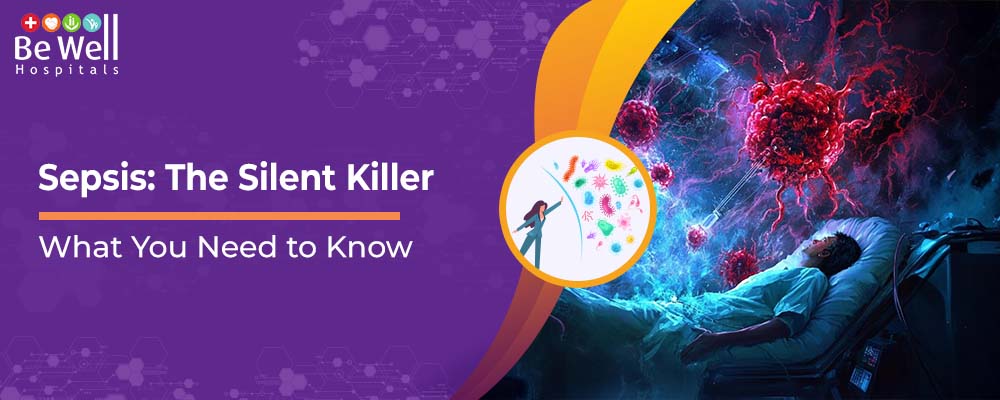Sepsis: The Silent Killer—What You Need to Know

Introduction
Sepsis, often referred to as a "silent killer," is a life-threatening medical emergency that occurs when the body's immune system overreacts to an infection, leading to widespread inflammation, tissue damage, and potential organ failure. Despite advancements in healthcare, sepsis remains one of the leading causes of death worldwide, with millions of cases reported each year. The condition progresses rapidly and can be difficult to detect in its early stages, making timely diagnosis and treatment crucial for survival. Understanding the symptoms, causes, and available treatment options is essential to improving outcomes and preventing complications. In this blog, we will explore what sepsis is, how it develops, and why it can escalate into severe sepsis or septic shock. Additionally, we will discuss the global impact of sepsis, its high mortality rate, and the importance of early medical intervention in saving lives.
Causes and Risk Factors of Sepsis
Sepsis can develop from a wide range of infections, making it a serious concern for individuals across different age groups and health conditions. Understanding the causes and risk factors can help in early identification and prevention.
Recognizing these risk factors can help in early detection and prompt medical intervention, ultimately improving survival rates and reducing complications.
Recognizing the Symptoms (The SEPSIS Acronym)
One effective way to identify sepsis symptoms is by using the SEPSIS acronym, which highlights key warning signs that require immediate medical attention.
S – Shivering or Fever: High fever, low body temperature, or uncontrollable shivering signal a severe infection spreading rapidly, requiring urgent medical attention.
E – Extreme Pain: Sepsis causes deep, persistent pain that may start at the infection site but spreads as the condition worsens, indicating a serious medical emergency.
P – Pale Skin: Unusual paleness, mottling, or bluish skin suggests poor circulation and oxygen deprivation, especially in newborns, the elderly, and high-risk individuals.
S – Shortness of Breath: Rapid, labored breathing or breathlessness at rest indicates sepsis is affecting lung function and oxygen levels, requiring immediate medical care.
I – Increased Heart Rate & Confusion: A fast heartbeat, dizziness, confusion, or altered mental state suggest reduced blood flow to the brain, signaling severe infection.
S – Severe Weakness or Unconsciousness: Extreme lethargy, inability to stay awake, or loss of consciousness indicate vital organ failure, demanding urgent medical intervention.
Recognizing the early warning signs of sepsis can be life-saving. If you or a loved one exhibits any of these symptoms, especially in the presence of an infection, seek immediate medical care.
How Sepsis Progresses
Understanding the stages of sepsis and recognizing its progression can help in early intervention, improving survival rates.
Early detection and timely medical intervention are crucial in preventing sepsis from reaching its severe stages. Recognizing symptoms and seeking immediate medical attention can mean the difference between life and death. Sepsis is a medical emergency, and delaying treatment increases the risk of permanent organ damage or mortality.
Preventing Sepsis
Since Sepsis often develops from infections, taking steps to reduce infection risks can significantly lower the chances of sepsis. Prevention involves a combination of personal hygiene, timely medical care, and managing underlying health conditions effectively.
By being proactive in managing infections and chronic conditions, individuals can significantly lower their chances of developing sepsis.
Surviving Sepsis: Life After Recovery
Surviving sepsis is just the start. Many face long-term effects needing medical care and lifestyle changes. Understanding and managing these challenges aids better recovery.
Recovery takes time, support, and rehab. Addressing both physical and mental health helps survivors regain independence and improve their quality of life after sepsis.
Conclusion
Understanding the causes, symptoms, and progression of sepsis can help individuals recognize the warning signs early and seek urgent medical care. Timely intervention is crucial in preventing complications like organ failure and septic shock, which can be fatal if left untreated. Maintaining good hygiene, managing chronic conditions effectively, and ensuring timely vaccinations are key preventive measures that can reduce the risk of sepsis. It is essential to remain vigilant and take infections seriously, as early detection can make all the difference in survival and recovery.
If you or a loved one experience any signs of severe infection, do not delay—visit our Emergency Care Department at Be Well Hospitals or call 9698 300 300 to book an appointment and receive expert medical care immediately.
